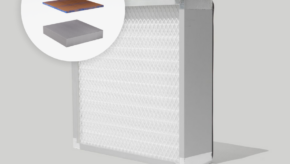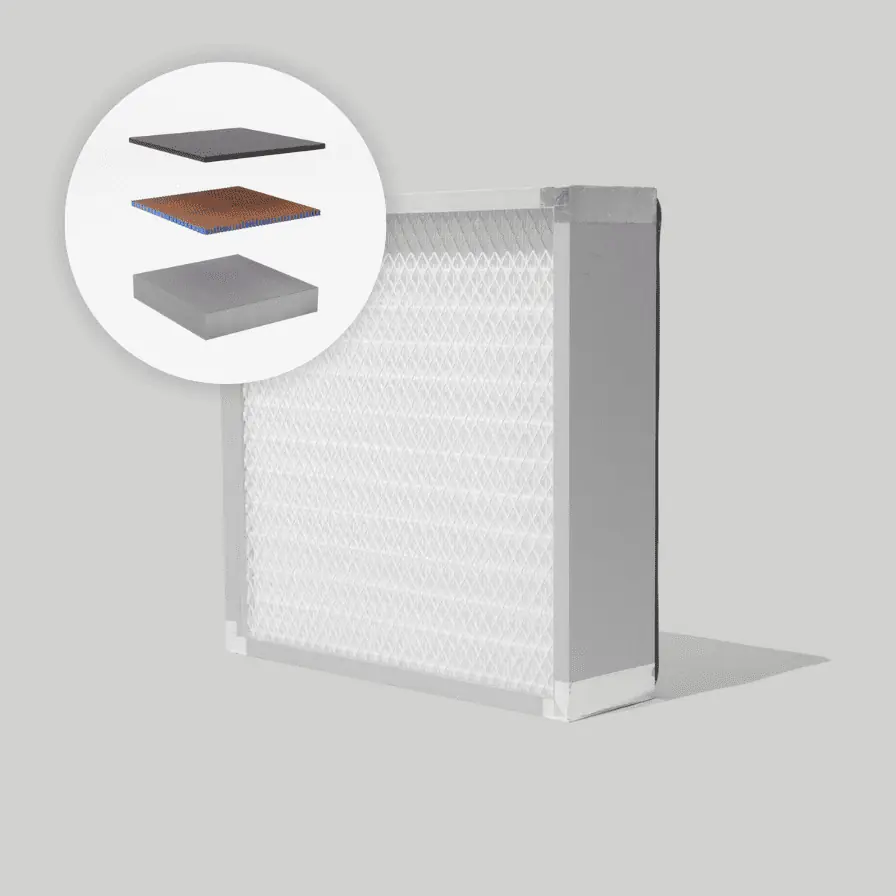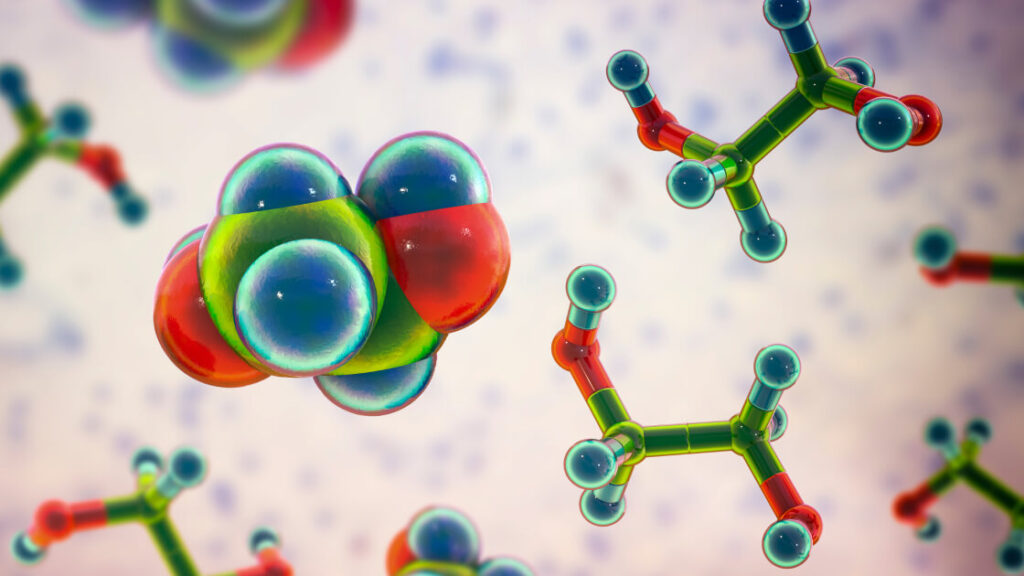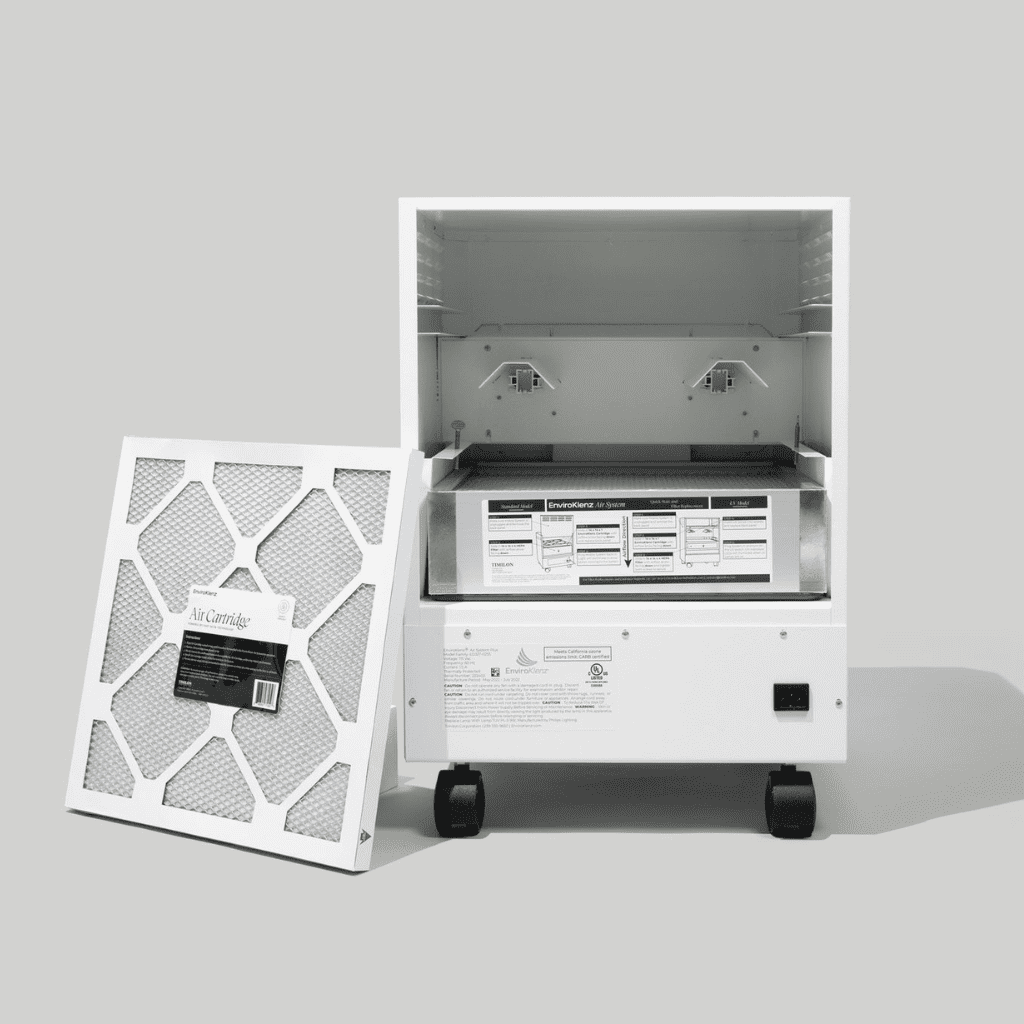Did you know that there are a variety of different chemicals and chemical compounds that can be found floating throughout your air? These chemicals can potentially aggravate your health and drastically impact the quality of your air, which has become a leading issue as the EPA (Environmental Protection Agency) continues to conduct more studies that illustrate the level of pollution inside indoor environments. According to some EPA studies, they have found that the levels of several organics average 2 to 5 times higher indoors than in outdoor environments. This increase of chemicals indoors can be caused by multiple factors including painting, chemical cleaning, new furniture, etc.
Understanding indoor air quality is important when discussing the effects that VOCs can play on this important factor to occupant health, especially within homes where most Americans spend close to 90 percent of their time, according to the EPA. Indoor air quality (IAQ) ultimately refers to the air quality within and surrounding a building and its structures, in particular, how this air quality relates to the overall health of the building occupant(s). Depending on the level and concentrations of pollutants contaminating the indoor air quality, health effects from indoor air pollutants can be experienced very soon after exposure, or in some cases, it may take months to years to begin to experience health issues from IAQ.
In this article we are going to discuss the impact of Volatile Organic Compounds (VOCs) on indoor air quality and learn the best methods to implement to properly remove volatile organic compounds from the air of a home or other personal indoor environment.
What is VOC (Volatile Organic Compounds)?
You may have regularly heard about the potentially hazardous chemicals called VOCs that can be present in the air of your home or other indoor environments. However, most people don’t really understand what these chemical compounds are, how they come to be in the home, and the toxicity of these chemicals to human health when exposure occurs. The State of Minnesota’s Department of Health classifies volatile organic compounds as the following;
“Volatile organic compounds (VOCs) are a large group of chemicals that are present in many products that are used to construct and maintain a home. Once these chemicals become present in the home, they will begin to be released through the off-gassing process into the indoor air that occupants breathe. VOCs may or may not be smelled, and a noticeable odor is not a good indicator of health risks like voc smell.”
Typically, as stated above, VOCs will turn into a gas from either a solid or liquid and this emission of the VOCs as a gas into the air occurs through the popularly termed off-gassing process that will produce the VOCs into the air, in turn contaminating the indoor air quality and potentially impacting human health. Additionally, it has been found that concentrations of VOCs in the air are regularly higher indoors than outdoors – some have suggested indoor VOC count is up to ten times higher than outdoor levels.

List of Common VOCs
The identification of VOCs in the air is not an easily recognized compound(s) within the environment. These chemicals are typically hard to detect in the air due to some of their properties such as colorless, odorless, etc. The release of VOCs into an environment can happen from a variety of household sources, and these sources can emit a broad spectrum of different VOC compounds into the air. When it comes to the list of common VOCs that are the most commonly found in indoor environments, such as a home, the different VOCs that will be found can include the following;
- Acetone: A common VOC that is found in nail polish remover, furniture polish and wallpaper. Acetone is a chemical compound that is harmful to human health in high doses and is a chemical that is fairly common in homes, which can be potentially hazardous to indoor air quality.
- Benzene: A known human carcinogen, benzene is a chemical found in environmental tobacco smoke, stored, fuels, exhaust from cars, paints, glue, carpeting and emissions from gasoline combustion.
- Butanal: The burning of candles, barbecues, and gas stoves can all contribute to the levels of butanal in the air of this indoor environment. Butanal can have a significant effect on indoor air quality and thus it is important to reduce these emissions and/or increase ventilation in the home to reduce this VOCs levels.
- Dichlorobenzene: Popular household deodorizers and mothballs are responsible for the contribution of dichlorobenzene into the indoor air of a home. This VOC can lead to health issues such as irritation the eyes, skin, and throat, as well as other potentially more hazardous conditions.
- Ethanol: A chemical found in many cleaning products, it is hard to avoid this VOC in a home. Specifically, glass cleaners, dishwasher detergents, laundry detergents, and many other cleaners will contain this chemical within their concentration.
- Formaldehyde: Among the most popular and well-known VOCs, Formaldehyde is a chemical used in almost everyday products such as molded, plastics, and lacquers. Formaldehyde can be found in a variety of floorings and furniture that are installed/placed into homes.
Volatile Organic Compounds (VOCs) Sources
When it comes to the emission of VOCs inside of a home, there can be many sources that will contribute to this release within this environment. It has been found that VOCs are common components or additives to many commercial and household products found within the home. The Environmental Protection Agency (EPA) lists several sources of VOCs in their Indoor Air Quality (IAQ) guide for Volatile Organic Compounds’ Impact on Indoor Air Quality, the following sources listed includes;
- Paints, paint strippers, and other solvents
- Wood preservatives
- Aerosol sprays
- Cleansers and disinfectants
- Moth repellents and air fresheners
- Stored fuels and automotive products
- Hobby supplies
- Dry-cleaned clothing
- Pesticides
- Building materials and furnishings
- Office equipment such as copiers and printers, correction fluids and carbonless copy paper
- Graphics and craft materials including flues and adhesives, permanent markers, and photographic solutions
What Level of VOC is Dangerous
The levels of VOCs present in the air of a home can range in severity with certain levels, with some levels known to be more dangerous to both human health and indoor air quality within the environment. Obviously, it is best to minimize and/or halt the exposure to VOCs, particularly in your home, but that is typically easier said than done. A major indicator for higher levels of VOCs within an indoor environment will be the health symptoms or effects that are experienced when present in this environment, as certain symptoms will be aggravated and exacerbated when the VOC count in the air is at a heightened level.
Additionally, if you find that your health is being impacted by the quality of the air in your home, it may be necessary to have testing conducted to monitor or detect the levels of contaminants in your home, including the level of VOCs present in the air that can be potentially dangerous overtime. There are many different types of air quality monitoring devices that can easily be placed into a home to monitor the levels of different contaminants in the air.

What is Considered Low VOC
When it comes to levels of volatile organic compounds (VOCs) that are found in concentrations within the air, there are certain levels that are considered to be low levels that will not have a tremendous impact on both IAQ and health.
Volatile organic compounds (VOC) limits are broken down into the following descriptors that classify the indoor air quality level in an indoor environment;
- Severe > 3000 ng/L
- Elevated 1500 – 3000 ng/L
- Moderate 500 – 1500 ng/L
- Normal < 500 ng/L
How Long Do VOCs Stay in the Air Indoors
The process of determining and identifying the length of time that VOCs will stay in the indoor air space of an environment is not an easily recognized element. Volatile organic compounds received this name due to the volatile nature of the chemical compounds including its unstable pattern in the environment such as the amount of time it will hang in the airspace. When VOCs are introduced into an indoor environment, such as a home, the chemicals – which are found on furniture, flooring, and in cleaning supplies, can become emitted into the airspace through off gassing, an example is how long do vocs last after painting, a lengthy process that can emit VOCs for quite some time after the drying process has completed.
VOC off gassing is the process of when a solid or liquid chemical compound turns into a gaseous compound in the air – which is commonly referred to as a VOC. This off-gassing process is a slow-moving development that can and will occur in the environment for days, weeks, and even months on end. The length of the off gassing will depend on the concentration levels of the VOCs in the environment, the conditions within this indoor environment (ventilation, air flow, etc.), and the use of methods to remove these chemicals from the air such as air purifiers or air filtration.
How to Measure Volatile Organic Compounds
The ability to successfully measure the concentrations of different airborne contaminants inside your home’s indoor air such as volatile organic compounds (VOCs) and other harmful chemicals, can be highly beneficial. Monitoring and testing devices will help you to maintaining indoor air quality and even the health of those exposed to these environments. The identification and measuring process can be accomplished through a variety of methods such as in-house sampling and lab testing, as well as through the easier and effective method of using monitoring devices that can measure the levels of VOCs in the air.
The Airthings Wave Mini is an indoor air quality monitor, that is able to keep track of the air around you in your indoor environments such as a home or office. This air quality monitoring device is able to effectively measure TVOCs (Total Volatile Organic Compounds), temperature, and humidity. This device offers a quick snapshot of your current air quality, through the use of a smartphone app that will present detailed results showing each pollutant in the air and the concentrations of this pollutant. These results will show concentrations over time, allowing you to keep an eye on the activity (rises and falls) of the pollutants in the environment to help identify the sources of these elevated levels in your indoor air.
How to Remove Volatile Organic Compounds in Indoor Air
When it comes to cleaning your indoor air, the Environmental Protection Agency (EPA) recommends doing so through the use of air cleaners and air filters in the home. This agency states that one of the most effective ways to improve indoor air quality and to reduce or remove sources of pollutants is through the ventilation of the air using portable air purifiers and HVAC filters installed into the environment. Portable air cleaners are stand-alone air units that are operated to clean the air, filtering out contaminants from the air – these include air purifiers.
Certain air purifiers utilize specific technologies that they use as the main component to their air filtration process. The most commonly used technologies used today by air purifiers are carbon, ozone, and ionizers, each of which work in their own unique way to filter the air of certain airborne contaminants. When it comes to the removal of VOCs, however, the patented EnviroKlenz technology has a proven solution that is specifically designed to attack and neutralize a broad spectrum of chemical compounds including VOCs from the air, both safely and effectively.
The EnviroKlenz Air Purifier is a revolutionary air purification device and voc air purifier that utilizes a proprietary earth mineral blend technology that is embedded into the first stage filtration in the air purification system, the EnviroKlenz Air Cartridge. The EnviroKlenz technology works through “adsorptive neutralization” where a wide variety of airborne compounds including noxious odors, chemical compound odors, and chemical compounds (VOCs) will be adsorbed, neutralized, and eliminated while also removing airborne particles such as dust and miscellaneous debris. The EnviroKlenz technology has been tested and proven effective against a broad spectrum of hazardous chemicals and VOC’s such as the following;
Additionally, the second-stage filtration within the EnviroKlenz Air Purifier is a hospital-grade HEPA filter that is capable of capturing and removing particulate matter larger than 0.3 microns in size at a 99.99 percent efficiency. This will include small allergens such as dust, dander, mold spores, bacteria, and viruses.
Article Sources:
- United States Environmental Protection Agency (EPA): Volatile Organic Compounds’ Impact on Indoor Air Quality (link)
- United States Environmental Protection Agency (EPA): Introduction to Indoor Air Quality: Indoor Air Pollution and Health (link)
- State of Minnesota Department of Health: Volatile Organic Compounds in Your Home (link)
- United States Environmental Protection Agency (EPA): Air Cleaners and Air Filters in the Home (link)









